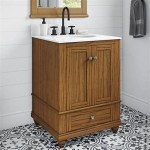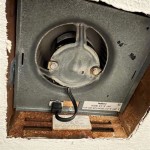Foul Smell Coming From Bathroom Sink
A foul odor emanating from the bathroom sink can be an unpleasant and persistent problem. Understanding the potential causes of this issue allows for effective diagnosis and resolution. This article explores several common sources of bathroom sink odors and offers practical solutions.
1. Biofilm Buildup
One of the most frequent culprits behind a smelly bathroom sink is the accumulation of biofilm. Biofilm is a slimy layer composed of bacteria, fungi, and other microorganisms that thrive in moist environments. The bathroom sink, with its constant exposure to water and organic matter like soap residue and toothpaste, provides an ideal breeding ground for biofilm. As the biofilm grows, it can produce volatile organic compounds (VOCs), which release unpleasant, often musty or sewage-like odors.
Addressing biofilm buildup involves thorough cleaning of the sink drain and overflow. A mixture of baking soda and vinegar can be poured down the drain, followed by hot water after a few minutes. This helps to break down the biofilm and flush away debris. Commercial drain cleaners designed to target biofilm are also available, but should be used cautiously according to the manufacturer's instructions to avoid damage to pipes.
Regular cleaning and maintenance can prevent biofilm from accumulating in the first place. Rinsing the sink with hot water after each use and periodically cleaning the drain with a baking soda and vinegar solution can help maintain a fresh-smelling sink.
2. Dry P-Trap
The P-trap, the curved section of pipe beneath the sink, plays a crucial role in preventing sewer gases from entering the bathroom. It works by retaining a small amount of water, which creates a seal that blocks the upward movement of gases. However, if the P-trap dries out, this seal is broken, allowing sewer gases to escape and cause a foul odor in the bathroom.
A dry P-trap can occur due to infrequent sink usage, especially in guest bathrooms or seldom-used sinks. Evaporation can also cause the water level in the P-trap to decrease over time. Simply running water down the drain for a minute or two refills the P-trap and restores the seal, eliminating the sewer gas odor.
For sinks that are used infrequently, pouring a tablespoon of vegetable oil down the drain can help slow down evaporation and keep the P-trap filled for longer periods.
3. Clogged Drain
A clogged drain can lead to standing water in the sink, which can become stagnant and emit unpleasant odors. The blockage itself, often composed of hair, soap scum, and other debris, can also harbor bacteria and contribute to the foul smell. Furthermore, a slow-draining sink can indicate a partial clog that restricts water flow and promotes the growth of odor-causing microorganisms.
Addressing a clogged drain typically involves removing the blockage. This can be accomplished using a plunger, a drain snake, or by manually removing the clog if it is accessible. Chemical drain cleaners can be used as a last resort, but should be used sparingly due to their potential to damage pipes.
Preventing clogs requires regular maintenance, such as using a hair strainer to catch hair and debris and avoiding pouring grease or oil down the drain. Periodically flushing the drain with hot water can also help prevent the buildup of soap scum and other materials.
4. Issues with Vent Piping
The plumbing vent system plays a crucial role in regulating air pressure within the drainage system. Proper venting allows for the smooth flow of wastewater and prevents sewer gases from being trapped. A blocked or improperly installed vent pipe can disrupt this balance, leading to slow drainage, gurgling sounds, and the release of sewer gases through the sink drain, causing a foul odor.
Diagnosing and resolving vent pipe issues typically requires the expertise of a qualified plumber. They can inspect the vent system for blockages, such as debris or bird nests, and ensure proper ventilation. In some cases, the vent pipe may need to be extended or rerouted to improve airflow.
5. Mold or Mildew Growth
The damp environment around the bathroom sink can create conditions conducive to mold and mildew growth. These fungi can thrive on surfaces like the underside of the sink, the countertop, and inside the cabinet. Mold and mildew produce a distinctive musty odor, often described as earthy or damp, which can permeate the bathroom.
Addressing mold and mildew growth involves thoroughly cleaning the affected areas with a solution of bleach and water or a commercial mold and mildew cleaner. Ensuring adequate ventilation in the bathroom, such as running the exhaust fan during and after showers, can help prevent mold and mildew growth. Fixing any leaks promptly also minimizes moisture buildup and discourages fungal growth.
Regular cleaning and proper ventilation are essential for maintaining a fresh-smelling bathroom and preventing the recurrence of mold and mildew issues.

How To Clean A Stinky Sink Drain Home Repair Tutor

How To Get Rid Of The Sewer Smell From A Bathroom Terry S Plumbing
What The Heck In This Ugly Black Stuff My Wife Has Been Complaining About A Nasty Smell Coming From Her Bathroom Sink Since We Moved Into Our New House Two Years Ago

How Can I Help A Stinky Bathroom Sink Drain Cleaning More

Sewer Smell In Bathroom Solved Bob Vila

Moldy Smelling Water From Bathroom Faucet Hometalk

How To Clean A Stinky Sink Drain By Home Repair Tutor
What To Do When You Notice A Sewer Smell In Bathroom Spaces Howstuffworks

My Bathroom Smells Like A Sewer What Causes That And How Do You Fix It Kitchen Infinity

7 Causes Of A Sewer Smell In The Bathroom Hays







